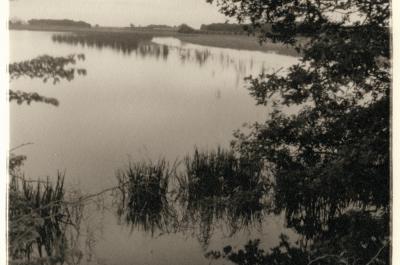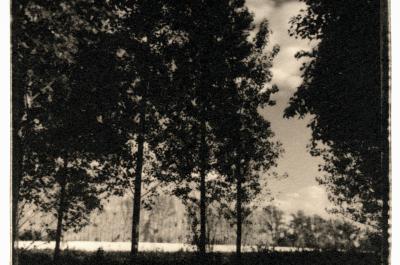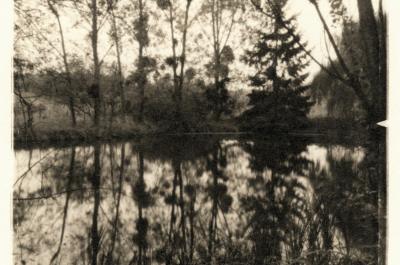Château’s High Galleries
Robert Charles Mann
Méta paysages
published at 10/11/2017
A demanding photographer who prints his photos himself and is regarded as one of his native country’s most sought-after experts in the field, Robert Charles Mann is an American who divides his time between two worlds: Los Angeles and Loir-et-Cher. He uses a very old technique, pinhole photography, to refract and help us share the impressions and emotions that the Loire’s landscapes arouse in him.
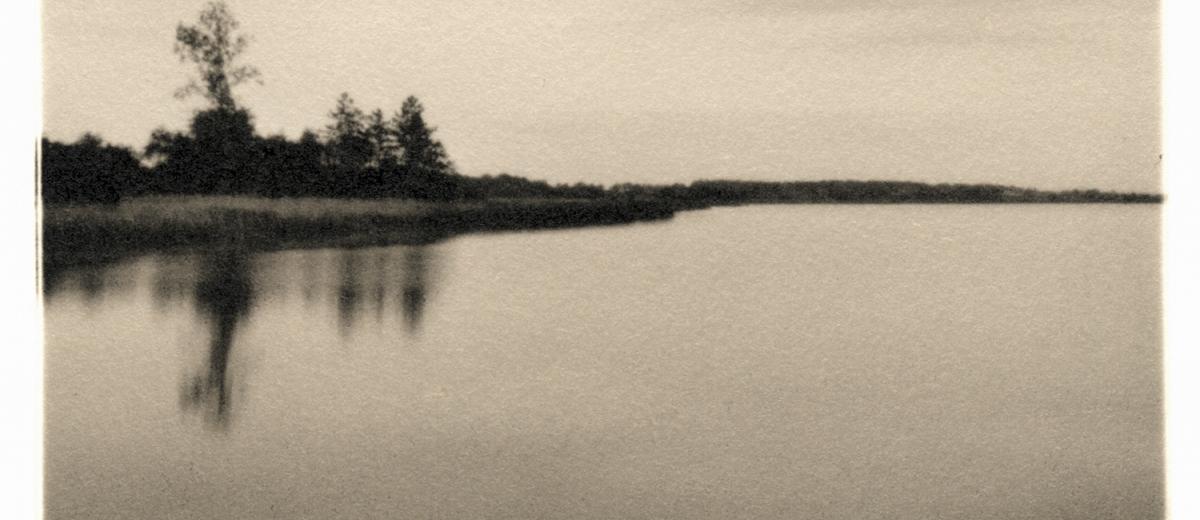
Presentation
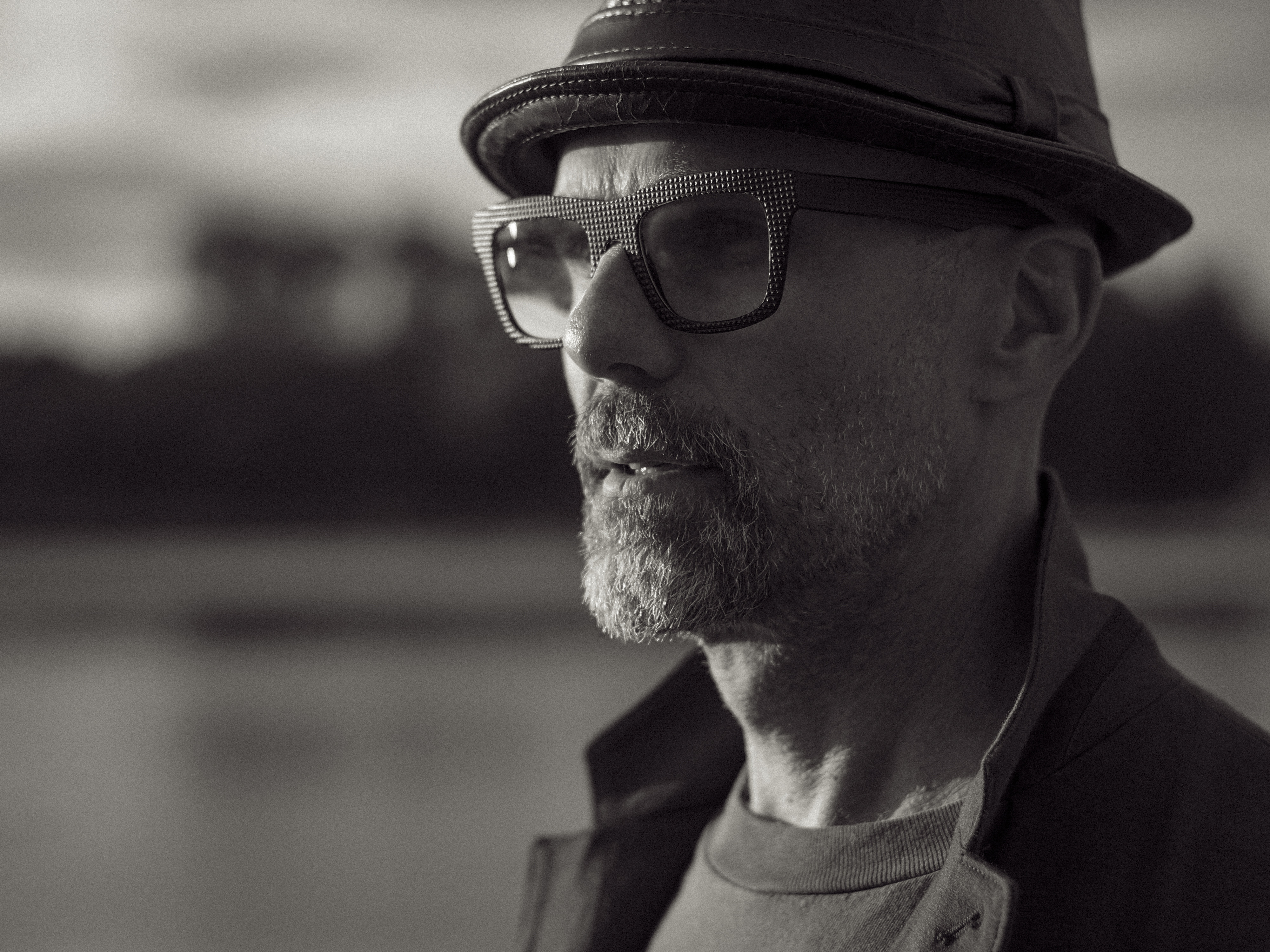
“I hope to share an experience rich in dreams with whoever looks at my photographs, and that they induce an exploration of the psyche. Several different lensless cameras are used to accomplish this. The pinhole camera has a way of suggesting objects rather than representing them because of the particular quality the pinhole image produces. This suggestive character carries with it a more profound mystery, which is not found on the surface of the image but rather in the possibilities of interpretation.
When this technique is combined with my themes and choice of subjects, the photographs begin to breathe and become metaphoric environments. A singular characteristic of pinhole photography is the fact that exposures are quite long, varying from seconds to several hours. This cumulative exposure produces effects that cannot be seen by the eye. Moving objects become translucent, having a vibrating quality, and some objects may become completely transparent in the process due to displacement during exposure.
The “Reflection” series is an experiment both as regards method and concept. Using the idea that water in motion and long exposure produce an accumulation of images, I point the camera at the surface of the water in direct opposition to the sunlight. Standing in the water, I discover the shapes of sunlight’s reflections across its surface, pushed by the currents and submerged objects. If I use a red filter, the reflection produces an abstract shape on an opaque background. These photos are not just simple abstractions, their origins are entirely organic.
The “Head” series was photographed with a handmade pinhole camera, using 4×5-inch film and an orange filter. I directed the subject, choreographing his movements during a single two-minute-long exposure. The result is not so much a montage of several portraits as a unique performance, as the subject changes position during exposure, so accumulating a variety of images on a single piece of sheet film. Francis Bacon’s paintings helped inspire this series.
The “Window” series was photographed with a handmade pinhole camera using 4×5-inch film, and was inspired by an 18th-century window found in my attic. The window acted as support and inspiration for this series of images, which I’m continuing to add to. My intention is to make the public aware of the voyeur that exists in all of us.
My work is entirely an analogue process, no Photoshop is used in any of these photographs. The prints for each image are made on either silver chlorobromide baryta fibre-based paper or photo-sensitised linen, using a lithographic developer which yields its unique color and granularity due to the fibres of the paper being revealed in the surface image itself.
A photographic image can be printed in thousands of ways. The tactile quality of the print is as important as the choice of materials. The print constitutes half the aesthetic of the photograph. Conscious decisions bring about unconscious effects. The world of printing has a range only equalled by that of the world of the image.
Infinite numbers of parameters and variables are involved in the creation of an image, and they sometimes produce powerful emotions.” Robert Charles Mann
When eight-year-old Robert developed his first print in his father’s lab, he understood what the world of photography held of magic even before he had actually taken his first photograph.
Born in the United States in 1960, Robert Charles Mann grew up in an artistic world: his mother was a concert pianist and his father a photographer. The influence of his family environment led him to combine musical and photographic studies. He attended music classes at Ohio State University, obtaining a degree in Theory and Performance in 1980 from the Hollywood Institute of Music in California.
He then went on to study astronomy, photography and contemporary musical composition, obtaining a diploma in Platinum Printing from the Maine Photographic Workshop in Camden, Maine, in 1990 and another in Pigment Printing from Düsseldorf Museum’s Fine Print Studio in 1992.
In the 1980s, he took part in a wide range of projects, eventually becoming involved with the Art Club, which lent its support to the production of avant-garde musical shows in Los Angeles. He returned to photo printing and set up his own business in order to fund his various artistic projects. He soon became one of the most sought-after printers, spending two years as studio manager and printer for Herb Ritts, and collaborating with Helmut Newton, Mary Ellen Mark, Peter Lindbergh, Sheila Metzner and Dennis Hopper among many others. At the same time, he held the position of Chief Photographer for the magazine “Exposure”. He has also produces countless prints for Twelve Tree & Twin Palms photographic books, as well as for the Hollywood Archives. Over the last twenty years, Robert Mann has printed over a million photos! In 1989, having earned a solid international reputation as photographer and printer, he moved to Paris, where he now lives.
He continues to collaborate with many other photographers while still producing his own images, only using a pinhole (i.e. lensless) camera to create them. Robert also composes music for films and television. He has recently been working with Brad Pitt, producing a photo report on the daily life of the Pitt-Jolie couple for W Magazine and continuing his collaboration with the actor by printing negatives from the latter’s extensive archives. Pitt has acquired 11 large-format prints from the “Orbit” and “Flowers” series.
